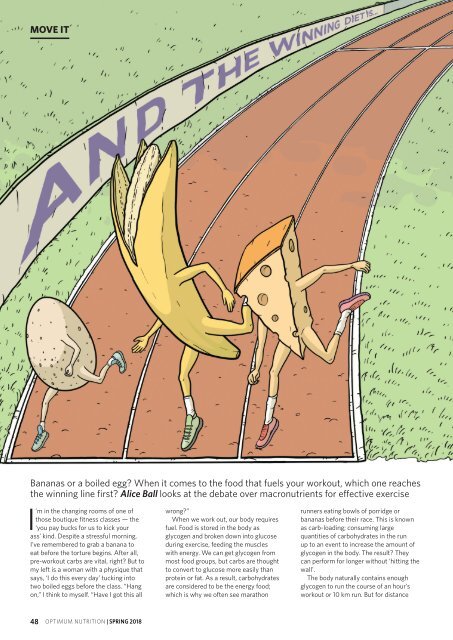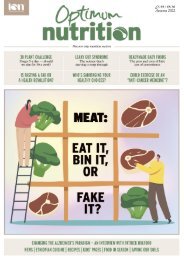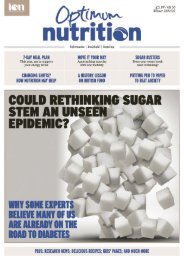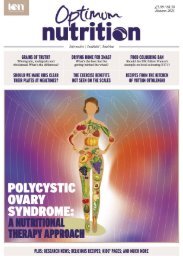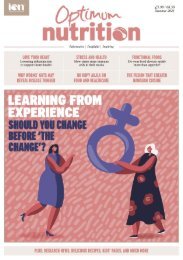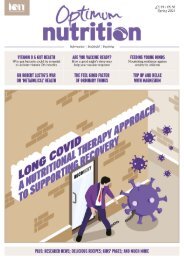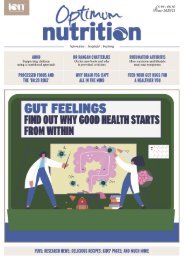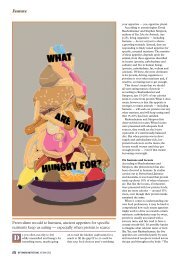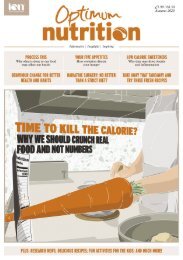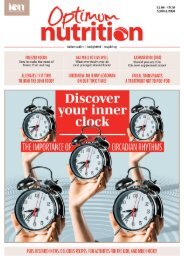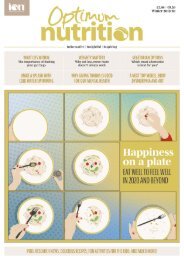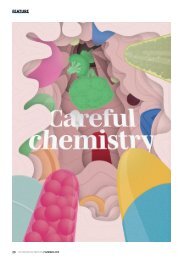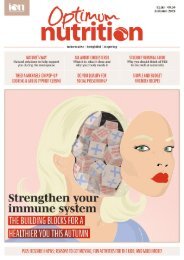Create successful ePaper yourself
Turn your PDF publications into a flip-book with our unique Google optimized e-Paper software.
MOVE IT<br />
Bananas or a boiled egg? When it comes to the food that fuels your workout, which one reaches<br />
the winning line first? Alice Ball looks at the debate over macronutrients for effective exercise<br />
I’m in the changing rooms of one of<br />
those boutique fitness classes — the<br />
‘you pay bucks for us to kick your<br />
ass’ kind. Despite a stressful morning,<br />
I’ve remembered to grab a banana to<br />
eat before the torture begins. After all,<br />
pre-workout carbs are vital, right? But to<br />
my left is a woman with a physique that<br />
says, ‘I do this every day’ tucking into<br />
two boiled eggs before the class. “Hang<br />
on,” I think to myself. “Have I got this all<br />
wrong?”<br />
When we work out, our body requires<br />
fuel. Food is stored in the body as<br />
glycogen and broken down into glucose<br />
during exercise, feeding the muscles<br />
with energy. We can get glycogen from<br />
most food groups, but carbs are thought<br />
to convert to glucose more easily than<br />
protein or fat. As a result, carbohydrates<br />
are considered to be the energy food;<br />
which is why we often see marathon<br />
runners eating bowls of porridge or<br />
bananas before their race. This is known<br />
as carb-loading; consuming large<br />
quantities of carbohydrates in the run<br />
up to an event to increase the amount of<br />
glycogen in the body. The result? They<br />
can perform for longer without ‘hitting the<br />
wall’.<br />
The body naturally contains enough<br />
glycogen to run the course of an hour’s<br />
workout or 10 km run. But for distance<br />
48 OPTIMUM NUTRITION | SPRING <strong>2018</strong>


